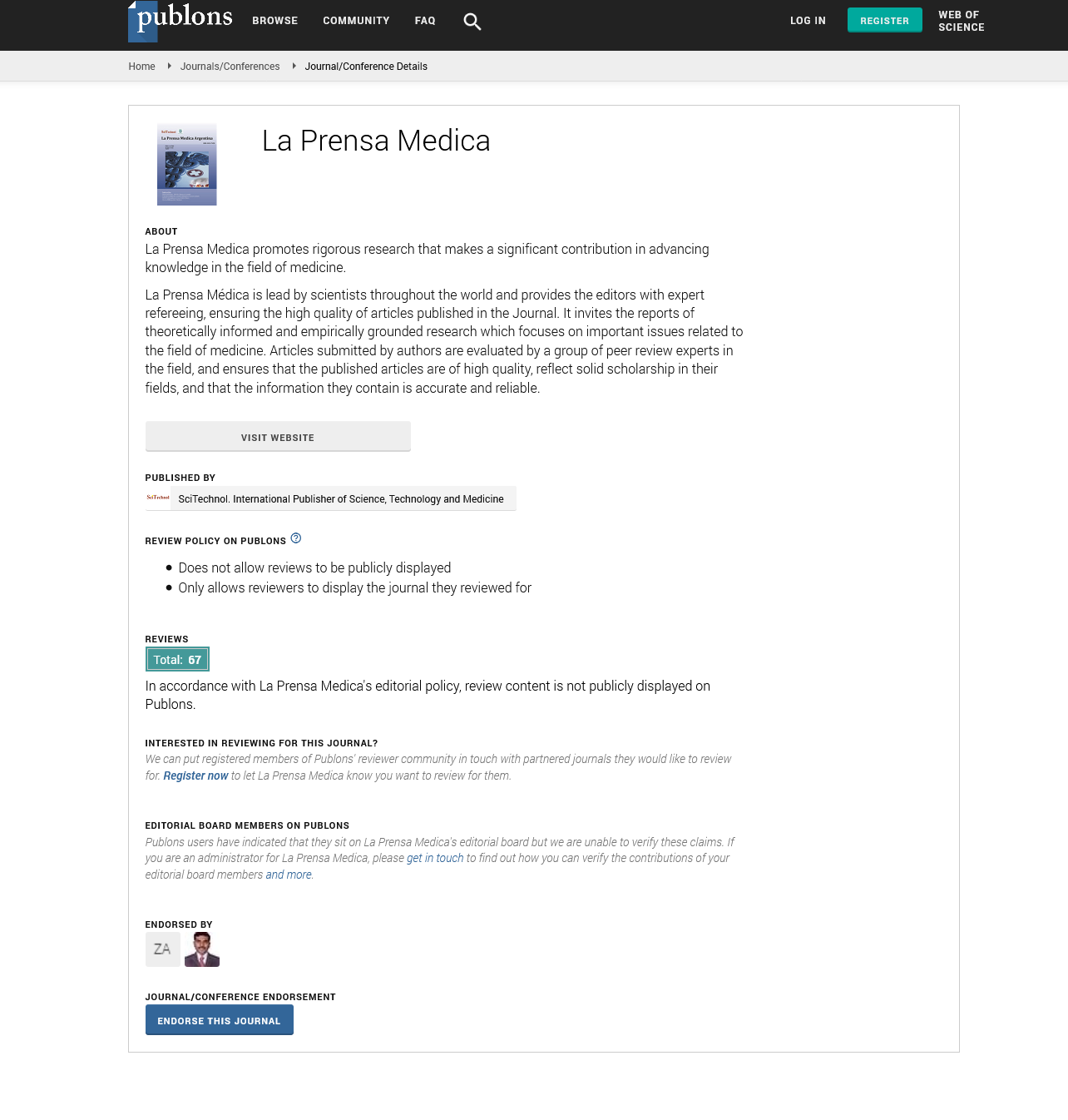Opinion Article, La Prensa Medica Vol: 107 Issue: 8
Imaging Parameters of Hip Dysplasia in Cerebral Palsy
Stefan G
Department of Psychological and Brain Sciences, Boston University, Boston, MA, United States
Keywords: Dysplasia, Cerebral Palsy
Description
Cerebral Palsy is the leading cause of childhood physical disability globally. The motor disorders of CP are often associated with musculoskeletal anomalies,of which hip displacement is the second most common abnormality after abnormalities of foot and ankle. Various radiological parameters have been described in the literature which detects and quantifies hip dysplasia, with MP being the current gold standard. This study aims to review these radiological indicators of hip dysplasia in children with cerebral palsy from the published literature. A literature search using PubMed, Embase,and Google Scholar was done on 15th June 2021 focusing on surveillance of hip dysplasia in cerebral palsy. The studies to be included were to have used anyone or more radiological parameter for detection of hip dysplasia with the use of any of the radiological methods.The initial search yielded 1184 results. After the screening of the abstracts and full texts, a final of 30 studies was included for this systematic review. The majority of the studies were graded as Level 3 evidence(16/30), followed by Level 2 studies(14/30).X-ray was the most common modality of detection of dysplasia followed by CT scan, ultrasonography, and arthrogram. The reproducibility of the various parameters shows good to excellent intraclass coefficients. Parameters other than MP can be used to screen hips in CP. This would be useful in patients in whom either the lateral acetabular edge is not discernible on a plain anteroposterior radiograph or there are issues in the positioning of the patient.Additional views and structures can be visualized which can lead to improved screening and planning. Further investigations are required to appreciate the full potential of these parameters and how they can be better utilized. Total hip arthroplasty is a very effective reconstructive surgery but is often associated with massive perioperative bleeding, which leads to anemia.Tranexamic acid(TXA)minimizes bleeding and the need for blood transfusion.However,no universal standard TXA dosing regimen has been established. The objectives of this study were (1)whether there was a difference in the amount of decrease in perioperative mean hemoglobin(Hb)level between a single topical administration of TXA and intravenous and topical combination administration, and we also investigated whether there was a difference in the amount of decrease in the perioperative mean Hb level due to the difference in the local dose of TXA. We retrospectively reviewed 292 hips between June 2013 and October 2020. The decrease in Hb level(difference between the preoperative value and the 7-day postoperative value)was used to estimate total perioperative blood loss. The mean perioperative reduction in Hb was compared between hips that received intravenous TXA preoperatively and intra-articular TXA at wound closure (combination administration group) and those that received only intra-articular TXA(single dose group).It was also compared by different local doses of tranexamic acid. We retrospectively reviewed the records of children treated at our center for isolated olecranon fractures (Mayo type IIA) with closed reduction and percutaneous Herbert screw fixation. The related indices and data of the group were collected for comparative analysis after an average follow-up of 6–8 months. The Herbert screws were removed by a second operation The mean reduction in Hb was significantly smaller in the combination administration group than in the single dose group.
Archives of Orthopaedic and Trauma Surgery
Archives of Orthopaedic and Trauma Surgery"is a rich source of instruction and information for physicians in clinical practice and research in the extensive field of orthopaedics and traumatology. The journal publishes papers that deal with diseases and injuries of the musculoskeletal system from all fields and aspects of medicine. The journal is particularly interested in papers that satisfy the information needs of orthopaedic clinicians and practitioners. The journal places special emphasis on clinical relevance. 95%of authors who answered a survey reported that they would definitely publish or probably publish in the journal again Despite advancements in total hip arthroplasty(THA) and the increased utilization of tranexamic acid,acute blood loss anemia necessitating allogeneic blood transfusion persists as a post-operative complication. The prevalence of allogeneic blood transfusion in primary THA has been reported to be as high as 9%. Therefore, this study aimed to develop and validate novel machine learning models for the prediction of transfusion rates following primary total hip arthroplasty.A total of 7265 consecutive patients who underwent primary total hip arthroplasty were evaluated using a single tertiary referral institution database. Patient charts were manually reviewed to identify patient demographics and surgical variables that may be associated with transfusion rates. Four state-of-the-art machine learning algorithms were developed to predict transfusion rates following primary THA, and these models were assessed by discrimination, calibration, and decision curve analysis. A total of 2110 publications were searched from Web of Science. The total sum of times cited is 40448 with the average citation per publication of 19.17 times. USA published most papers(652, 30.9%).The most productive organizations is University of Toronto (96 publications). Spine(308 publications)published the most publications in this field. In co-citations of references analysis, four clusters of references are constructed by VOSviewer. In co-occurrence of keywords analysis, three clusters of keywords are constructed by VOSviewer.The latest keyword“degenerative cervical myelopathy”appeared in 2017 in 42 papers. Other relatively new keywords include“surgical outcomes”,“association”,“sagittal alignment”,“prognostic-factors”that appeared in 2016 in 33, 31, 34 and 37 papers respectively. Three common surgical approaches exist for cervical radiculopathy or/and cervical myelopathy include anterior,posterior and anteroposterior approaches. Each approach has its advantages and disadvantages, and should be considered case by case depending on the surgeon’s experience. Surgical outcomes between artificial disc replacement and fusion remain controversial.
 Spanish
Spanish  Chinese
Chinese  Russian
Russian  German
German  French
French  Japanese
Japanese  Portuguese
Portuguese  Hindi
Hindi 

